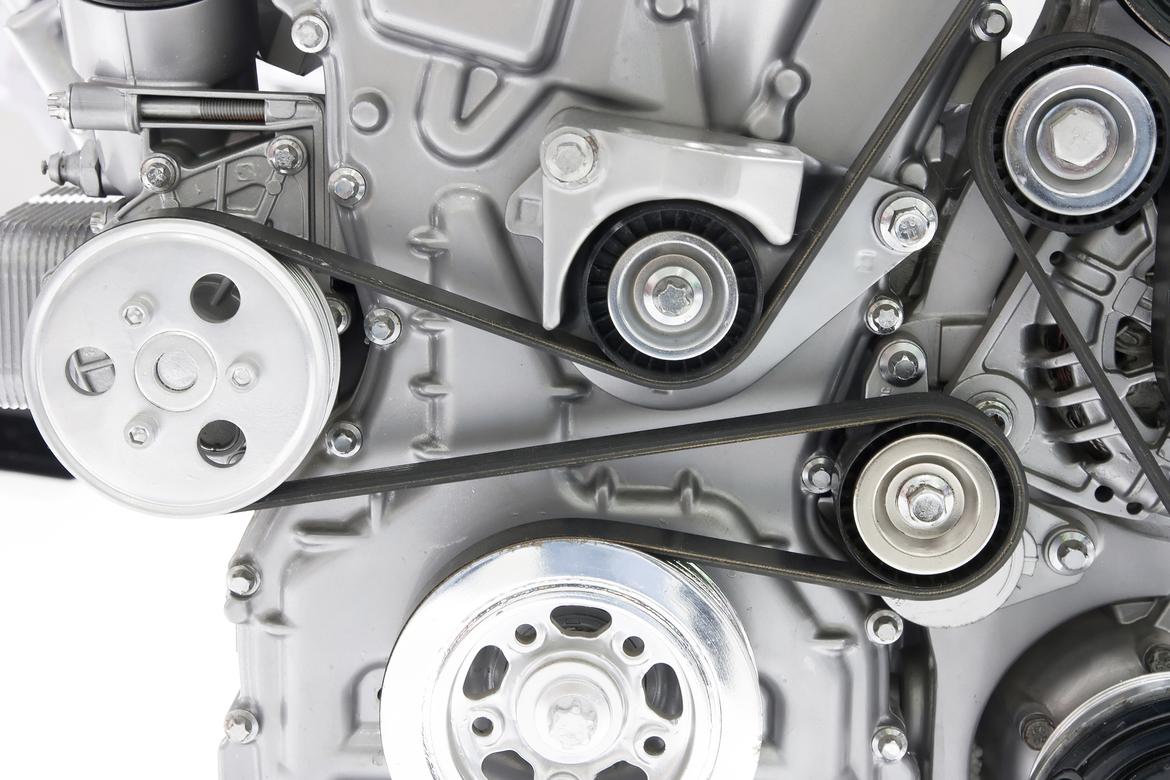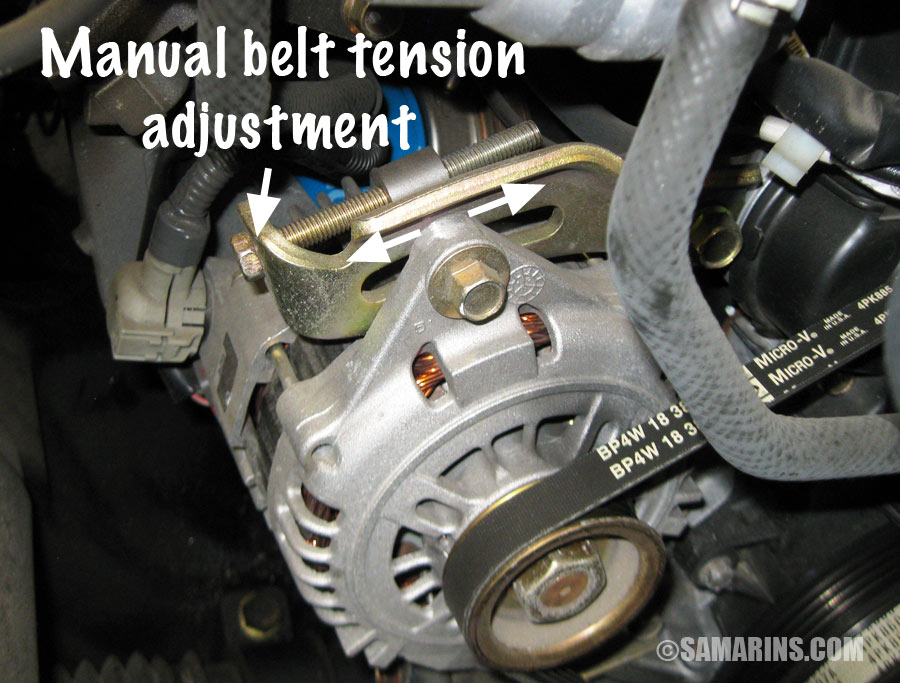Should I Replace Belt Tensioner When Replacing Acessories Belt
The Ford Taurus belt tensioner serves to hold the serpentine drive belt in place. The tensioner, which consists of an arm and a pulley, presses down on the serpentine belt to keep it in constant contact with the other pulleys in the serpentine system. The tensioner can be manipulated back and forth when replacing the belt. A spring within the tensioner arm is what applies the force, holding tension on the belt. In the event the spring should break or lose its strength, you will need to replace the tensioner.
Apr 21, 2018 - Rear wheel drive vehicles can omit step 1 through 4. Removing Serpentine Belt. Replace serpentine belt when replacing a tensioner.
Step 1
Place the end of the tensioner tool into the hole in the side of the tensioner and release the pressure by levering the tensioner away from the belt.
Step 2
Slide your other hand in and slip the serpentine belt off the tensioner pulley. Once the belt is off, allow the tensioner to slowly relax and then remove the tensioner tool.
Step 3
Use the socket set to unbolt the tensioner from the engine. Depending on your year and make of Taurus, this may be accomplished easier from the top side, or through the wheel well, or underneath.
Step 4
Lift the tensioner away from the engine and set it aside.
Step 5
Position the new tensioner where the old one was and start the fastening bolts back in by hand, using your other hand. Once the bolts have begun to thread in properly and are holding, tighten them down with the socket set.
When To Replace Serpentine Belt Tensioner
Step 6
Slide the tensioner tool back in and lever the new tensioner backward until you can slip the belt over the pulley with your spare hand. Slowly allow the tensioner to move back into place and remove the tool.

Start the engine and monitor the belt to make sure it is riding on all the pulleys properly.
Tip
- Certain model years will require the removal of the idler pulley before you can access the tensioner bolts. The idler pulley can be removed by simply taking the bolt out of the center of the pulley and slipping the pulley off its mount.
- Ablestock.com/AbleStock.com/Getty Images
More Articles
- Visit the Solution Center to Explore Articles

- Interior
- Exterior
- Lawn
- More
- Articles
House
Auto
Health
Pets
Services
The timing belt is an often overlooked part of the car but it plays an important role.
If an auto mechanic told you that your car’s timing belt needed immediate replacement and it was going to cost more than $1,000, you might assume it’s a scam.
But unlike the shady mechanic who attempts to change your engine air filter every oil change, replacing the timing belt is absolutely crucial.
The timing belt is an integral part of your engine and, if it fails, so does your engine, causing your car to shut down.
“You don’t want to be driving 75 miles per hour on the highway if it broke,” says Carl Roberson, owner of highly rated Carl’s Cool Cars in Las Vegas. “It’s definitely a safety issue.”
How the timing belt works
The rubber timing belt is part of most internal combustion engines and is responsible for synchronizing the engine’s functions. It controls the rotation of the camshaft and crankshaft and the opening and closing of the engine’s many valves to allow air and gas in and out, which causes the fuel to ignite in the combustion chamber. During this explosion, the valves push the pistons down.
“In order for the process to take place, the valves have to open and close at the right time,” Roberson says. “The valves have to be in the correct position as well as the pistons. The valves open at different times for each cylinder. It’s a mechanical ballet of sorts.”
When the timing belt breaks, the valves, which are very light, will open at the wrong time and hit the larger pistons and cause damage.
When to replace the timing belt?
Unfortunately, in most cases, there are no obvious signs the timing belt is near death; it will just break. That’s why highly rated auto mechanics recommend replacing it every 60,000 to 100,000 miles. Always check your owner’s manual for the manufacturer’s recommendations.
Timing belts used to be a relatively ignored maintenance item by many drivers. Roberson says replacing a broken timing belt used to be common, but now he says most replacement jobs are for preventive maintenance.
“People are a lot more aware of the timing belt, and the mechanics are educating drivers more about them,” Roberson says. “Now, more people know about it and what can happen when it breaks.”
Timing belt replacement cost
Replacing a timing belt for preventive reasons typically costs $500 to $900. However, replacing a broken timing belt may cost up to $2,000 or more if it caused damage to the valves, pistons or water pump.
“In some cases, you may have a very expensive repair and you have to buy a new car,” says Kathy Wallace, owner of highly rated Central Garage Company in Reynoldsburg, Ohio. “You’ll have to rent a car, and it can put you in a very stressful situation.”

For more information, please visit the Angie's List Guide to Auto Service and Maintenance.